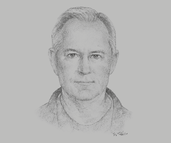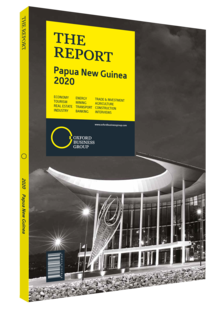John Lewins, CEO, K92 Mining: Interview

Interview: John Lewins
What changes do you anticipate in regional demand for gold and copper when taking into account industrial activity growth in Asia?
JOHN LEWINS: India has traditionally been a major source of demand for gold, especially during wedding season. The growing middle class in India will have a positive impact on gold demand in the commercial sector. This growth in other Asian countries will also contribute to demand for gold products, although on a smaller scale. Industrial demand for gold, to be used in electronic equipment, for example, is small compared to consumer demand, but will still see some moderate growth in the coming years. It is unclear if gold production has peaked, but production growth seems to be falling globally.
A major driver of demand for copper, meanwhile, is rapid global urbanisation. More people live in urban areas than in rural areas, and this imbalance is expected to grow. Asia and Africa are at the forefront of this change, but I expect all countries undergoing urbanisation to be a driver of copper demand for at least five to 10 years, despite minor obstacles. Discovery of new deposits and increases in production are diminishing, and I foresee a global drop in spending on exploration. There have been almost no Tier-1 deposit discoveries of either gold or copper in recent years, so I expect price increases for both in line with rising demand. Other minerals of interest are lithium and nickel, which are key resources for the production of batteries.
How can extractive companies ensure that local communities receive adequate economic and social benefits from mining projects?
LEWINS: A legislative framework to establish local entities to participate in mining projects is the cornerstone of community involvement. These entities need to be monitored properly and legislated transparently. The Investment Promotion Authority can be of help here by communicating these directives in annual reports. It is also important to identify legitimate communities and landowners who could participate or be compensated. Almost without exception, there will be uncertainties and disputes that need to be addressed before the actual participation of the parties.
When looking at community development, major areas of investment are education and infrastructure, such as access to power, clean water and roads. Communities also benefit from job creation. However, their economic and social development should not be tied exclusively to the mine. As such, local entities founded to serve the mine should be set up in a way to be able to develop into broader economic activities. As every mine has a limited lifespan, diversification is key, and overdependence should be avoided. Ultimately, investment in community development will have wide benefits.
To what extent can Papua New Guinea add more in-country value in the minerals sector?
LEWINS: Port Moresby has previously played host to a gold refinery, and there is potential to develop another commercially viable refinery. Production of copper and nickel is too limited to justify smelters. Inevitably, activity in the upstream sector has to come from exploration. Initially, smaller companies will undertake spending on exploration and initial construction because they have a smaller overhead and can spend more effectively than larger firms. As smaller companies move the mine up the value chain, larger ones will continue to make acquisitions. The legislative framework needs to provide more certainty to allow this process to happen. For example, the Mining Act currently allows for two years for an exploration licence and 10 years for a mining licence. This should be increased to five years and 20-30 years, respectively. There should also be a clear framework providing security of tenure, the option to expand mining leases and the continued ability to utilise fly-in-fly-out arrangements for nationals and expatriate workers. Certainty is the most important factor, as one needs to know that the rules are not going to change.
You have reached the limit of premium articles you can view for free.
Choose from the options below to purchase print or digital editions of our Reports. You can also purchase a website subscription giving you unlimited access to all of our Reports online for 12 months.
If you have already purchased this Report or have a website subscription, please login to continue.

